Go the extra mile
Towards a cooler planet
The economics and practicalities of home solar panels. Time to break even etc
1 February 2023
The world is moving towards a sustainable future, and home solar panels are a big part of that. In 2017, renewable energy projects beat traditional energy systems in capacity. This shows a big shift in the energy sector.
Solar energy is expected to grow a lot, possibly reaching 124EJ by 2050. This means we need to understand how it affects home installations.
The global demand for energy is set to increase by 28% from 575 trillion Btu in 2015 to 736 trillion Btu by 2040. Homeowners looking into solar panels need to consider costs and long-term benefits.
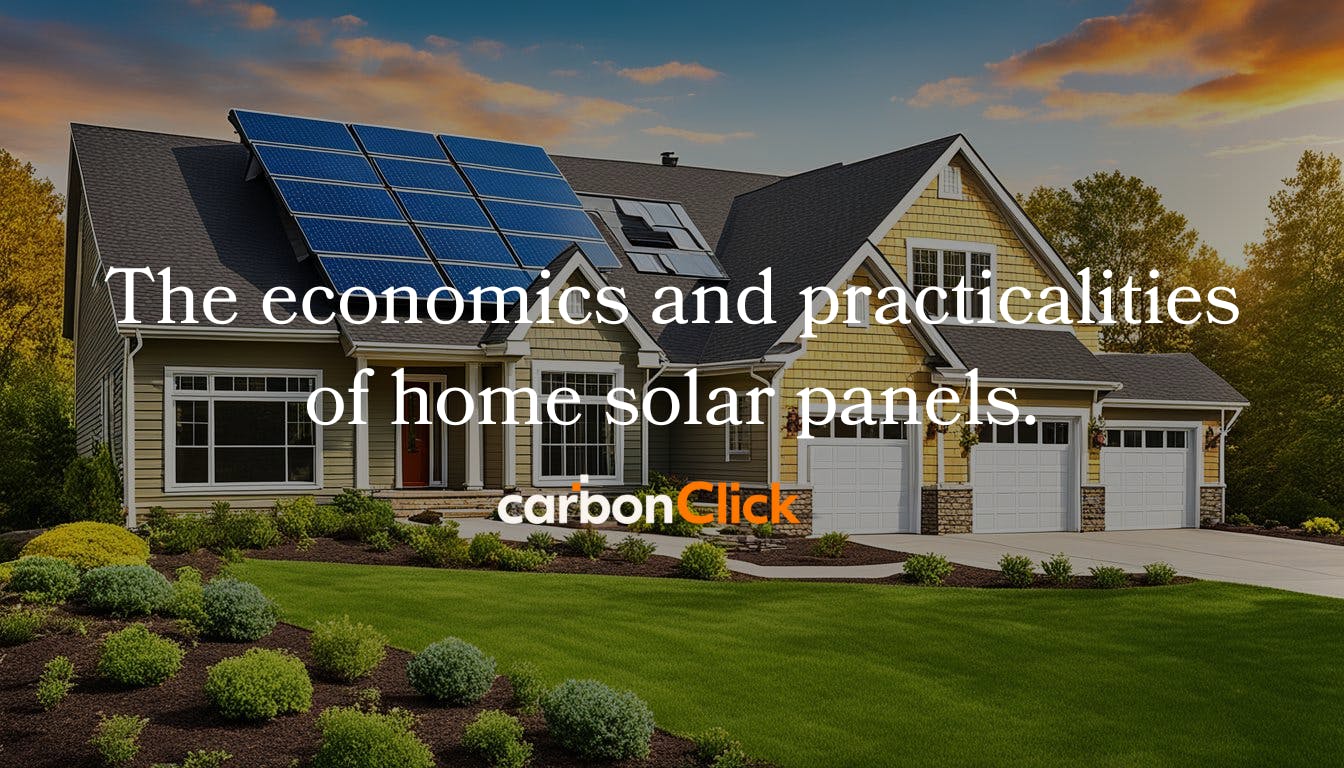
Key takeaways
EnergySage helps homeowners in all 50 states and Washington, D.C. to look into clean energy options. Marketplaces and experts like The Wall Street Journal and Bloomberg suggest a big year for home solar. Many homeowners face high upfront costs and might move to break even around six years.
- The global demand for energy is increasing, projected to rise by 28% from 2015 to 2040.
- Solar energy projects are growing rapidly, with China leading the world in solar PV generation.
- EnergySage offers nationwide insights into clean energy solutions for homeowners.
- Market analyses from major sources predict a dynamic year for residential solar.
- The break-even period for home solar panel installations is often around six years.
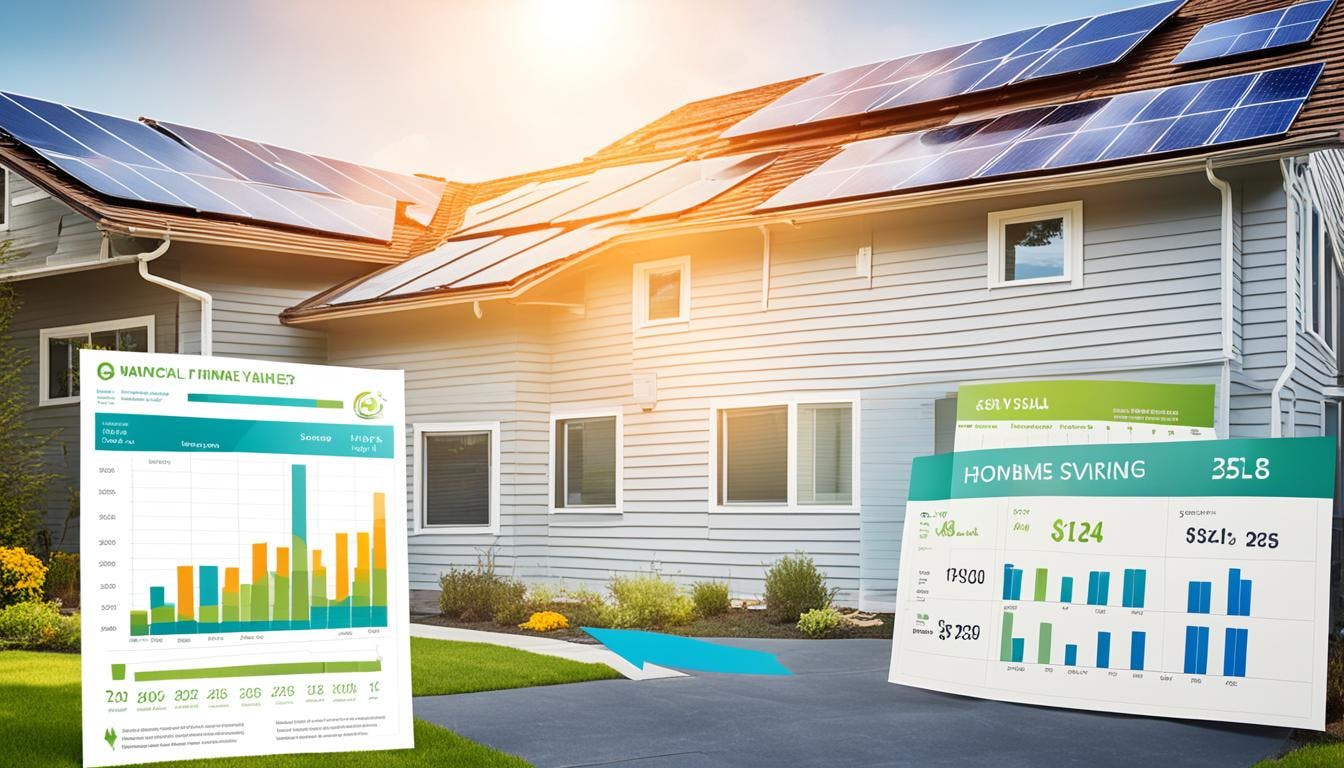
Understanding Solar Technology
Solar technology turns sunlight into electricity with photovoltaic (PV) panels. These panels catch the sun's energy and turn it into power for homes and businesses. The cost of solar PV systems has gone down, making it a good investment.
In 2017, the cost per kWh was $0.16, making solar a good alternative to traditional energy.
Why Solar Energy?
Choosing solar energy has many benefits. Solar panels cut down electricity bills and can increase a home's value. Homebuyers often pay more for houses with solar systems.
There are also tax credits and incentives for installing solar panels. This makes solar energy more appealing financially.
By 2050, solar power could make up 76% of the world's electricity. This shows solar energy's big potential for the future. As technology improves, solar energy will likely become even more cost-effective, making it a key part of our energy mix.
Costs associated with Home Solar Panel Installation
Homeowners thinking about switching to solar energy need to look at the upfront costs. The price of a solar power system in the US can be between $10,000 to $18,000. But, this cost can lead to big savings on electricity bills and can even increase your home's value.
Initial Investment
Looking into the cost of solar panels, several factors affect the total price. The Solar Energy Industries Association says the average cost for installing solar systems is about $25,000. But, this price can change a lot based on the project details.
Surveys like the EnergySage's Electrification Contractor Survey show that adding things like energy storage and electric vehicle chargers can increase costs. These extras can make the initial cost go up.
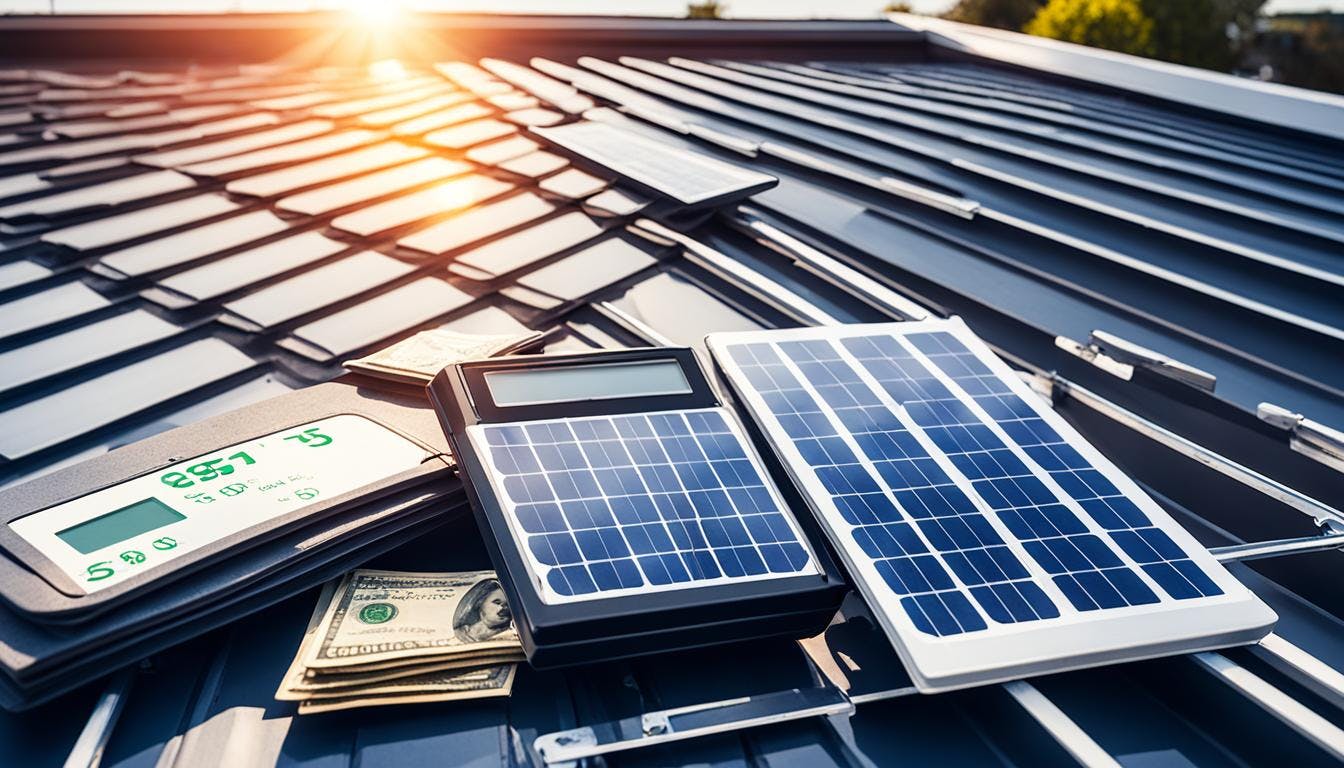
Maintenance and upkeep
Even though solar panels can be expensive to start with, they are cheap to keep up. Most systems last 20 to 30 years without needing big updates. So, upkeep costs are very low.
Articles in The Wall Street Journal and Canary Media say that after the start, homeowners pay little for solar panels. Just doing simple things like cleaning and checking the panels now and then keeps them working well.
So, even though starting with solar panels might seem expensive, the long-term benefits and low upkeep make it a good choice. Whether you're putting in a new system or upgrading, doing a detailed cost analysis can help you make a smart choice. This way, you can meet your financial and environmental goals.
“Once installed, solar panels are a low-maintenance source of renewable energy, offering stable electricity during grid outages and lower utility bills compared to traditional power sources.”

Factors influencing Solar Panel Economics
Looking at solar panel economics, many factors matter, especially the local setting. Location and sunlight exposure impact are key to a solar system's success and cost-effectiveness. Local solar incentives and solar energy rules also affect how quickly solar power is adopted and the money made from it.
Location and Sunlight Exposure
Where you put solar panels affects how much sun they get, which changes their performance. Places like California get a lot of sun, making them great for solar power. Even small changes in location can mean big differences in how much energy you get, says the National Renewable Energy Laboratory (NREL).
This sunlight exposure impact shows why picking the right spot for your solar panels is crucial for the best energy output.
Local Regulations and Incentives
Local rules and solar energy regulations are key to making solar projects work financially. Many places offer local solar incentives, like tax credits, rebates, and net metering. This lets homeowners sell extra electricity back to the grid. For example, the US federal investment tax credit (ITC) can cover up to 26% of the project cost, making solar more appealing.
Knowing about local rules and incentives is vital for those thinking about solar panels. Policies like California's net metering or Japan's 2012 feed-in tariff can offer big economic benefits. These supports and policies help lower the cost of solar, making it more appealing for homes and businesses.
In conclusion, when looking at solar economics, we must think about sunlight and local rules together. This way, we can make the best choices for going solar, getting both financial and environmental gains.
Financial incentives and Government Policies
Understanding financial incentives and government policies is key for those thinking about solar panels. These measures lower the upfront cost and cut the solar panel payback period.
Tax Rebates and Credits
Tax rebates for solar panels are a big help. The federal government offers up to 26% tax credit for installing solar systems. Some states add their own rebates, making solar energy more affordable.
This can greatly reduce the time it takes to pay back the solar panel investment. It makes solar energy a better choice for many homes.
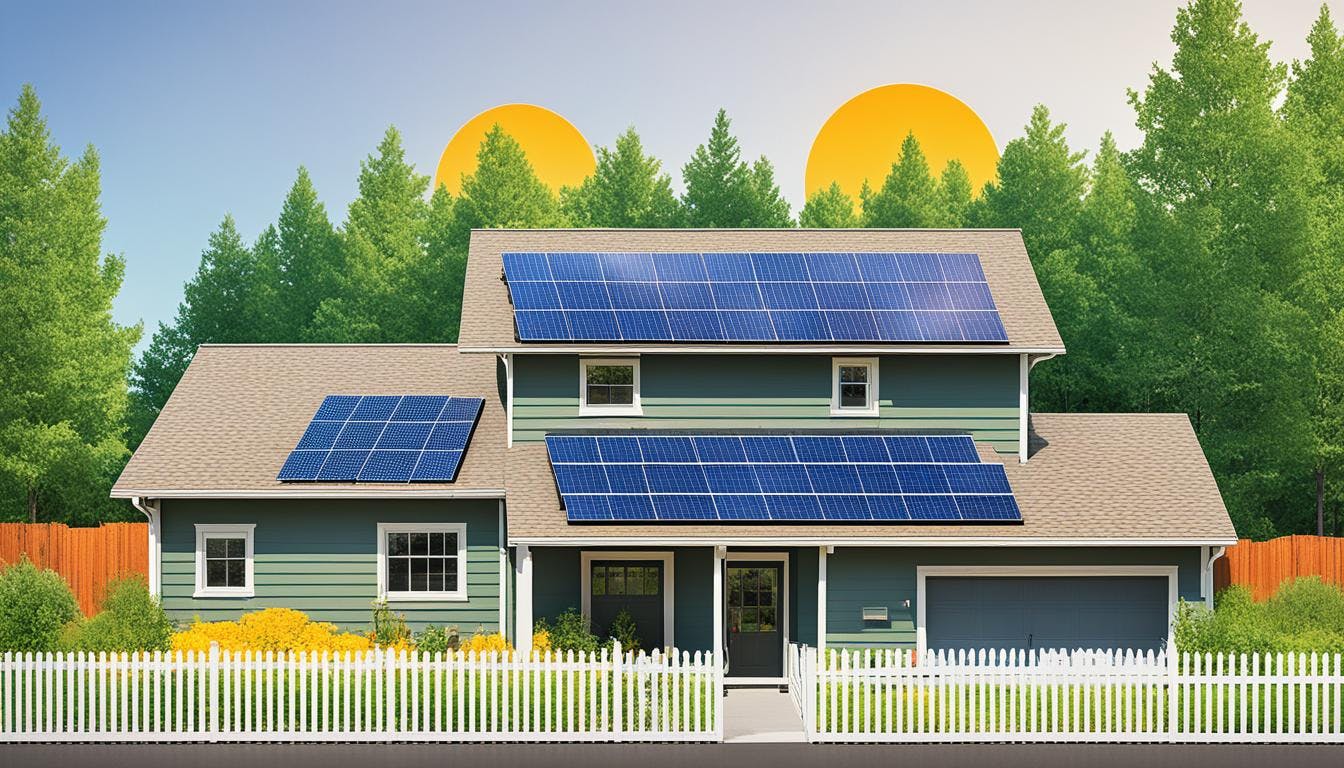
The federal solar policy landscape is evolving, with significant changes like the Inflation Reduction Act poised to make a considerable impact.
State and Federal Policies
Federal policies are key to the US moving towards sustainable energy. Initiatives aim to get 45% of the nation's electricity from solar by 2050. Extending solar tax credits is set to cost $200 billion over ten years, showing the government's support forclean energy.
States like California show the power of solar energy. Nearly 20% of California's electricity comes from solar panels. Policies like the California Solar Initiative have boosted solar adoption at home.
Both federal and state policies help grow the solar industry and encourage homeowners to go solar. These incentives make solar energy more appealing for a sustainable future.
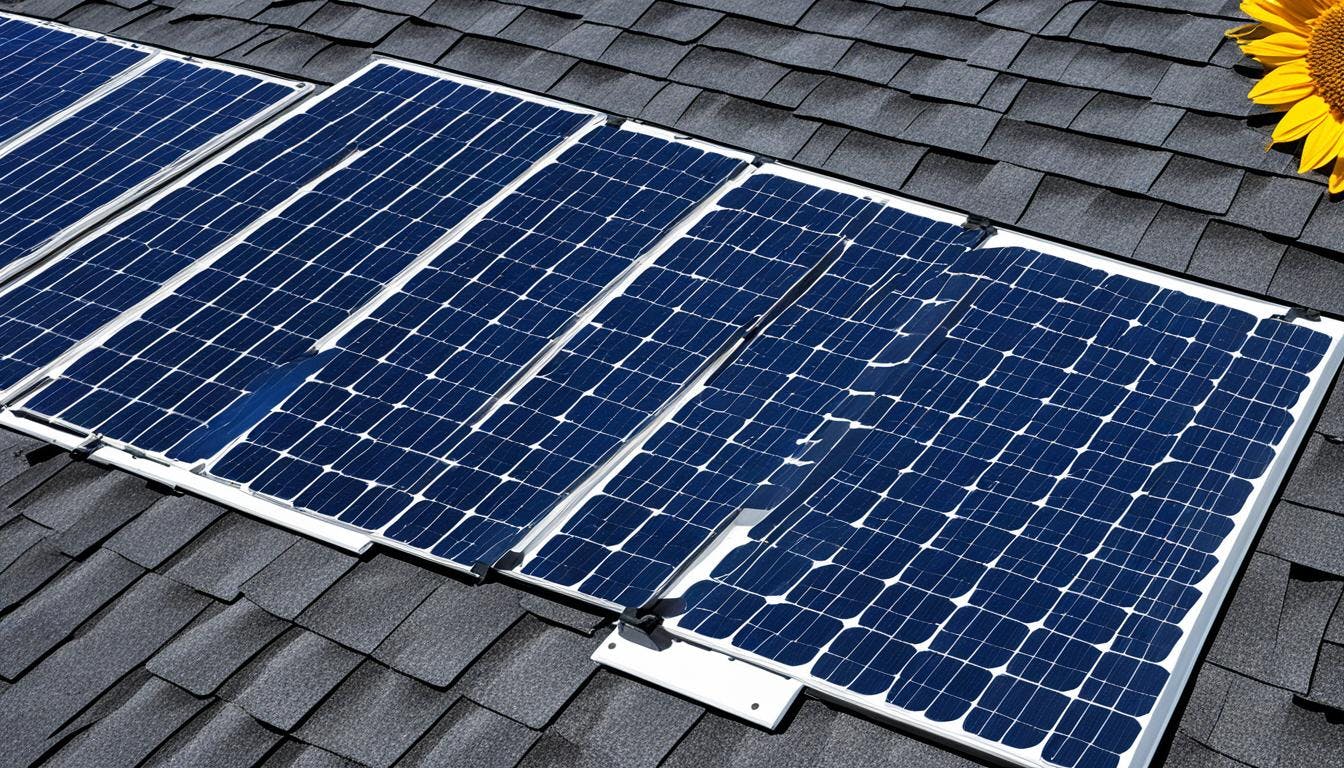
Understanding the Solar Panel payback Period
For homeowners, knowing if solar panels are a good investment is key. The solar panel payback period is a crucial metric. It shows how long it takes for savings to equal the initial cost of the system.
What is Payback Period?
The payback period is the time it takes for an investment, like solar panels, to pay for itself. For solar panels, this is usually between six and ten years. This depends on location, electricity costs, and incentives.
Calculating the Payback Period
To figure out when your solar investment pays off, consider several factors:
- Total System Cost: This includes panel prices, installation, and extra gear. After incentives, costs are between $20,000 to $30,000.
- Annual Savings: Savings come from lower electricity bills. Homeowners save about $153 a month, adding up to big annual savings. Net metering can bring more benefits.
- Incentives and Rebates: Incentives like the solar tax credit and SRECs lower the system cost. This makes payback faster.
A solar panel savings calculator gives a precise estimate. By entering your details, you can see your expected payback period. For instance, EnergySage says the average payback is under eight years. California and West Virginia have different costs, at about $14,885 and $30,758 respectively.
To accurately calculate payback, add up the total cost (after incentives) and divide by annual savings. This helps homeowners understand when their solar investment will pay off. It aids in making smart choices about solar energy.
Return on investment for Solar Panels
Looking into the return on investment for solar panels shows both short and long-term gains. We'll explore the main points that show how homeowners can benefit financially over time.
Short-term vs Long-term Returns
At first, the main solar financial benefits are the savings on electric bills. A 6-kilowatt system can cut a household's bills by about $1,500 a year or $125 monthly. Federal tax credits also help lower the upfront cost, making most homes break even in 8 to 13 years.
Looking ahead, the benefits grow even more attractive. Over 25–30 years, homeowners can see a return of about 31.5%. This means huge savings over the life of the system, around $18,950.62 for DIY setups and $14,214.62 for contractor-installed ones. Hawaii offers the biggest savings despite higher initial costs.
Financial Benefits Over Time
The solar investment longevity means ongoing financial gains. Solar systems keep saving money on bills and can even make money from selling extra power. With low upkeep costs, around $150 a year, they're a smart choice.
State incentives like tax credits, net metering, property tax exemptions, and rebates boost the return. The Federal Solar Investment Tax Credit gives a 26% credit, cutting the initial cost significantly.
Choosing solar panels is a wise financial move. The mix of quick savings, government help, and long-term gains makes solar energy a smart investment.
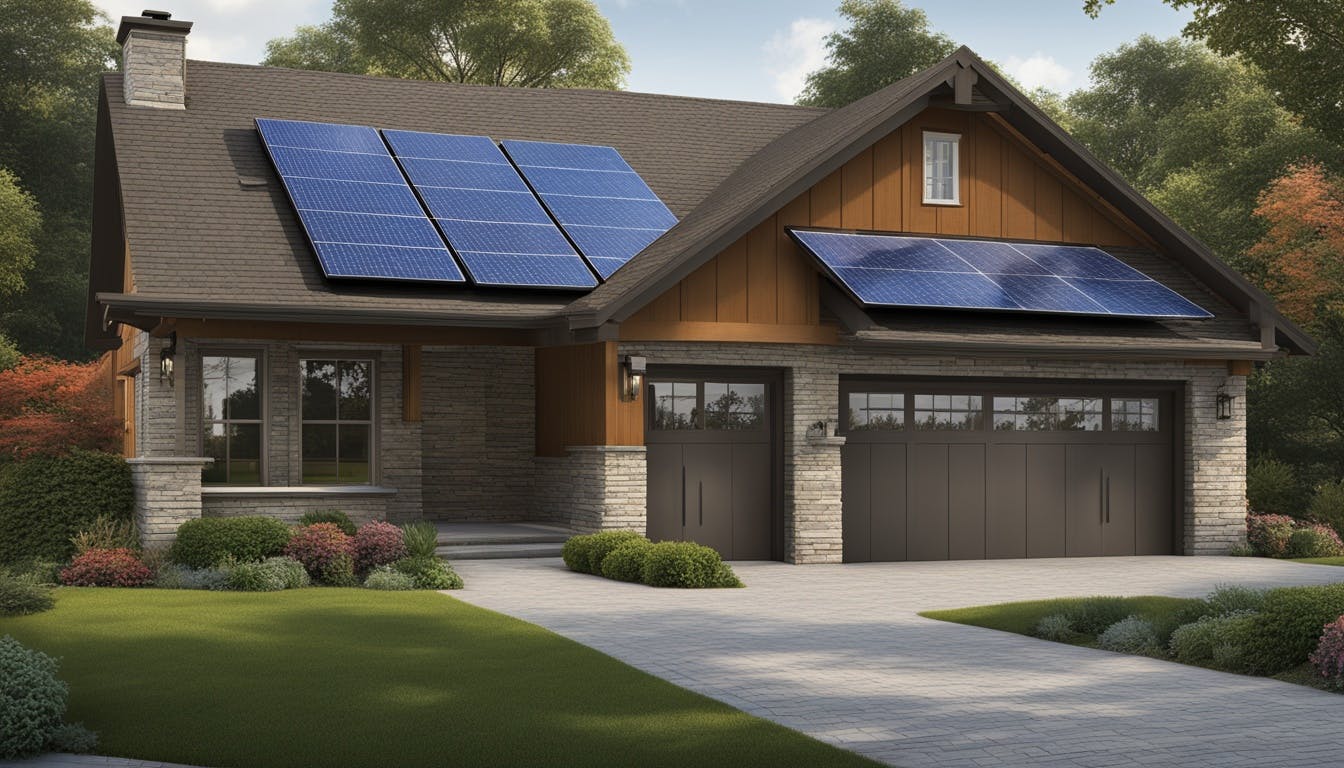
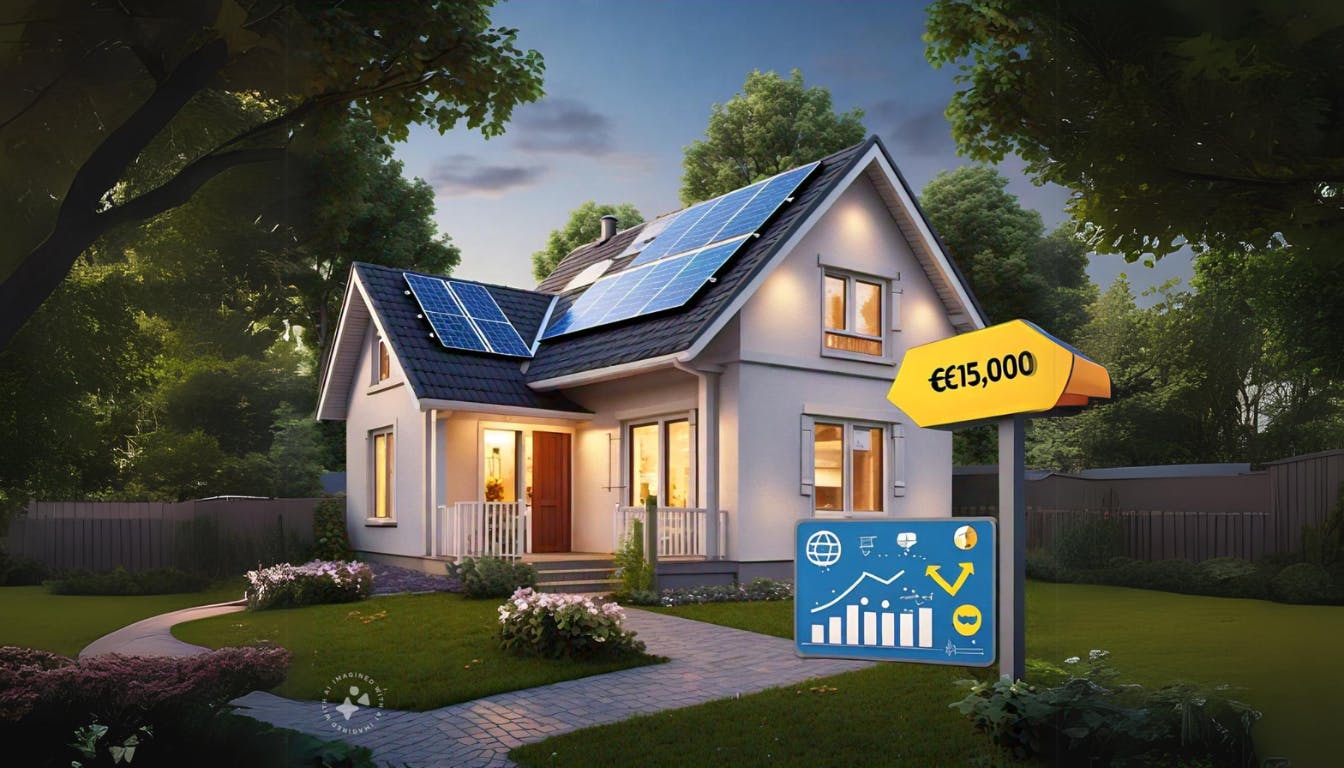
Economic impact on Property Value
Installing solar panels can bring many financial benefits to homeowners. These benefits include making the property more marketable and increasing its resale value. Let's explore how solar energy can change property economics.
Increased Marketability
Today, buyers look for homes with renewable energy features. A house with solar panels is more appealing. They are ready to pay £15,000 more for a home with a 3.6 kilowatt solar system than one without.
This demand comes from a desire for sustainable living and saving on energy costs. Reports from Electric show how important home energy choices are. Properties with solar panels are seen as more desirable.
"Solar energy marketability isn't just a trend; it's a substantial shift in how buyers perceive value," says the New York Times.
Resale Value considerations
The resale value of a property is key when looking at the return on solar investment. Studies in states like Massachusetts and Wisconsin show that being near solar installations doesn't lower property values. In fact, a study by CohnReznick, LLP found no negative impact on property values in 15 states.
Gregory J. from North Andover, MA, saw a high ROI, becoming cash flow positive in just 2.43 years. Utility-scale solar projects also boost local economies, bringing in $750 million in taxes in 2020. With the U.S. solar industry growing by 24% each year, homes with solar installations are becoming more sought after.
Using a Solar Panel savings Calculator
Homeowners wanting to switch to renewable energy find a solar panel savings estimator vital. These tools show the costs and benefits of solar energy. They help you see the financial benefits over time.
Importance of Accurate Estimates
Getting accurate estimates is key for a good solar investment. EnergySage and The Department of Energy stress the importance of using solid data. This ensures a more precise estimate tailored to your needs.
How to Use Savings Calculators Effectively
Knowing how to use a solar panel savings estimator right makes your savings calculation more accurate. Start by entering your electricity use and local rates. Think about your local climate and sunlight exposure too, as they affect solar panel efficiency.
Also, remember the 30% federal solar tax credit and any state or local incentives. These can cut the upfront costs and boost your investment return.
Experts from Bloomberg and others say homeowners use these calculators for financial planning. These tools help you use federal and state incentives. This can make your efficient solar ROI analysis better. Making an informed choice can lead to big savings and a quicker payback, making solar panels a smart investment.
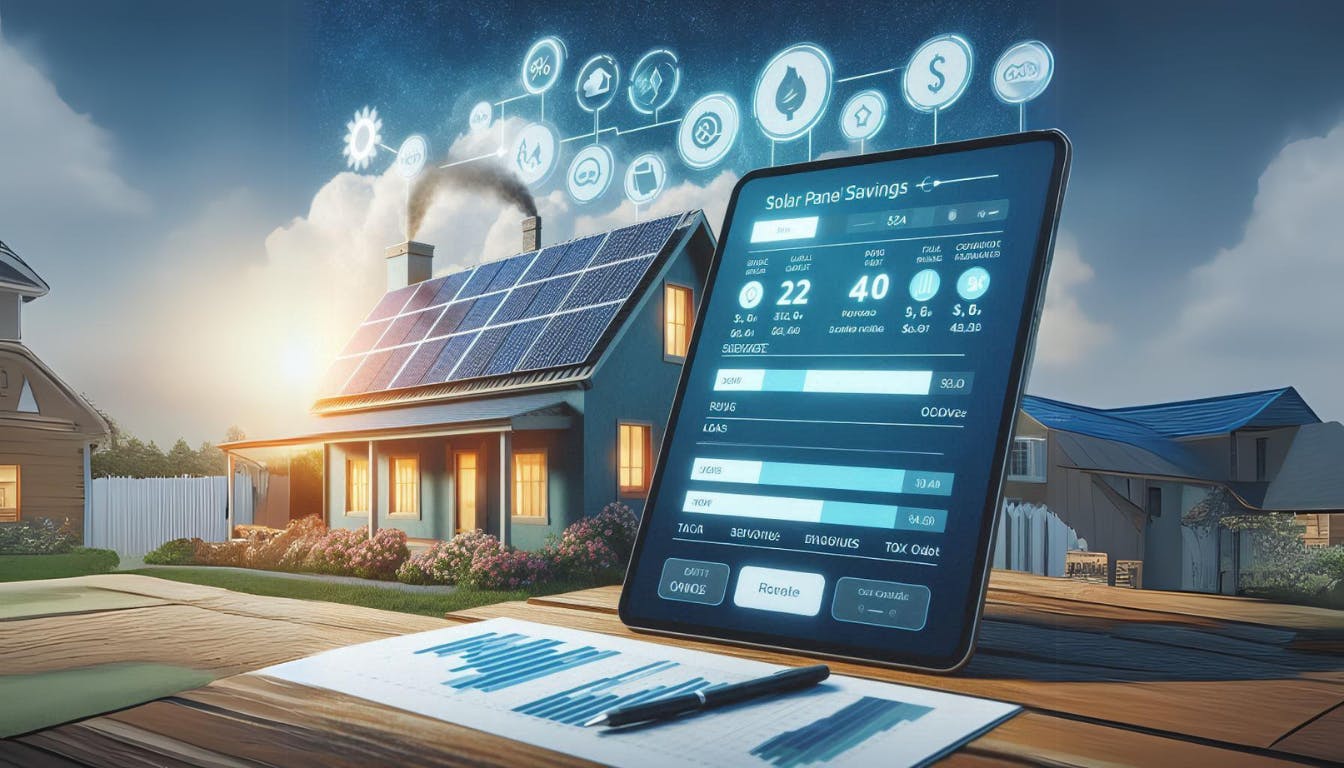
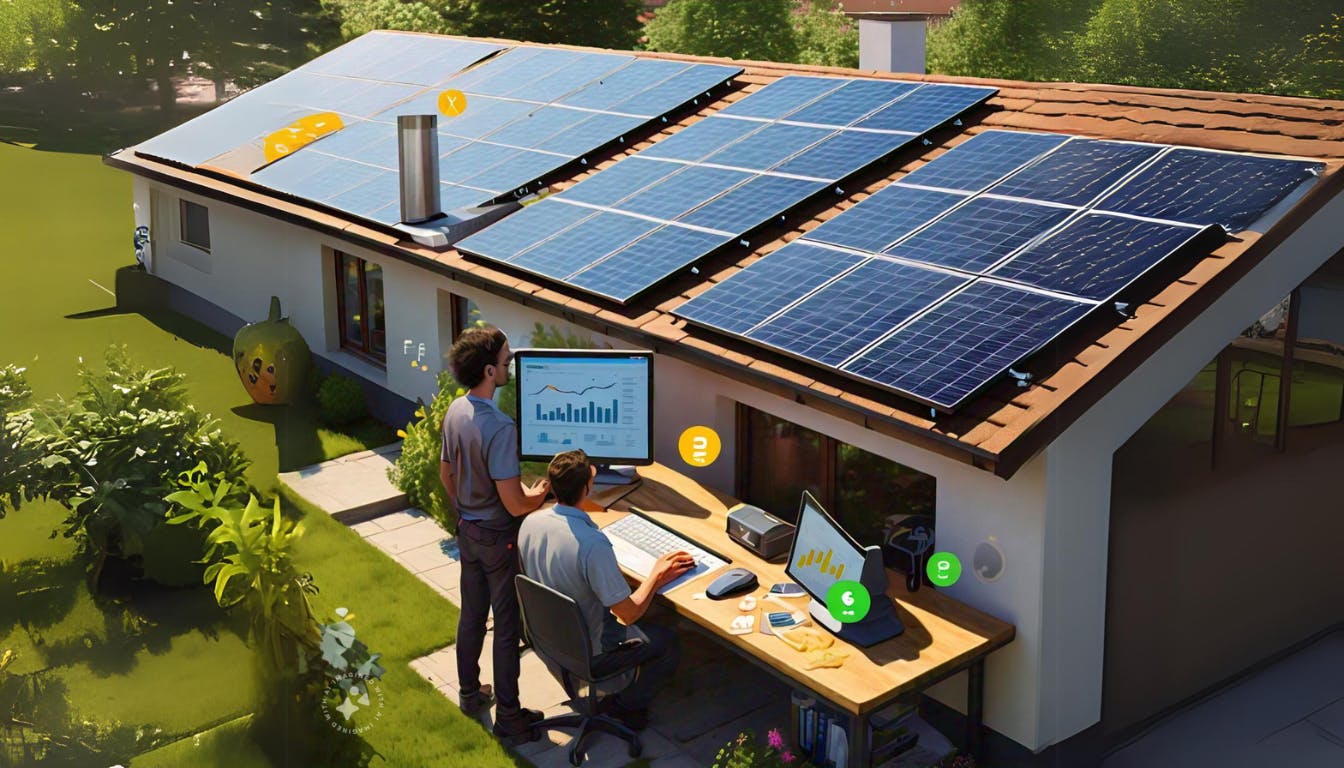
Practical considerations before Installing Solar Panels
Thinking about getting solar panels? You need to look at a few important things to make sure they work well and save you money. Key points include checking if your roof is right for solar panels and picking a good installer.
Roof Suitability
First, check if your roof is good for solar panels. Photovoltaic rooftop suitability depends on sunlight, roof direction, and strength. For example, an 8 kW system might produce more in Albany than in San Jose.
- Sunlight hours: Your roof should get direct sunlight for at least five hours a day for the best energy output.
- Roof condition: Make sure your roof is strong enough to hold the solar panels and the weather.
- Space availability: You need enough room for the panels. To figure out how many, use this formula: system size ÷ production ratio ÷ panel power rating.
"The Department of Energy advises that homeowners should check potential installers carefully. They should have the right certifications and lots of experience."
Choosing the right installer
Choosing the right installer is crucial for a successful solar panel setup. A good installer will install correctly, offer warranties, and help after the sale. Here's what to keep in mind:
- Certification and Experience: Choose installers with certifications from groups like the North American Board of Certified Energy Practitioners (NABCEP).
- Warranty: Solar panels should have at least a 10-year warranty. The installation should be covered for 2 to 3 years.
- After-sale Services: Keeping panels clean every six months is key to keeping them working well.
Looking at these solar system installation considerations helps make sure your solar investment is smart and will pay off in the long run.
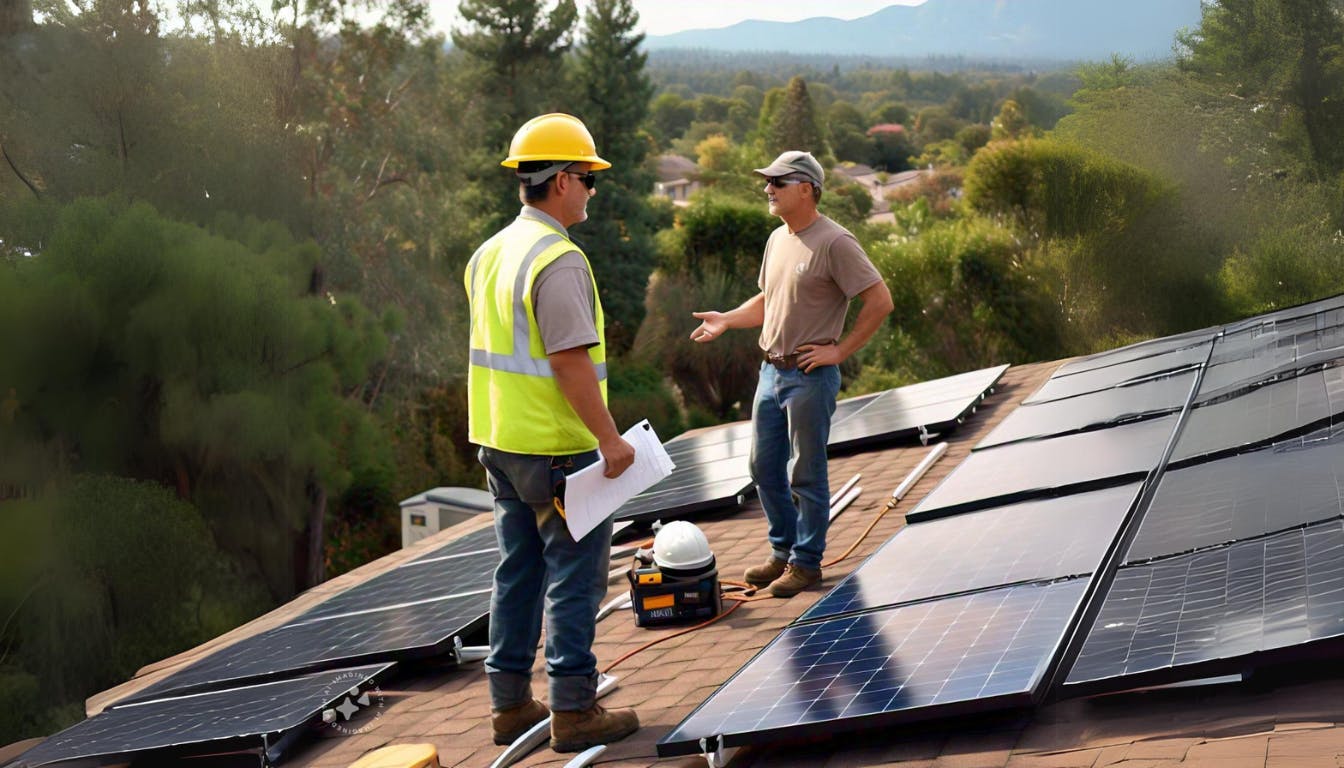
Solar Panel Economics in Today's Market
The solar panel market has seen big changes in the last ten years. It has grown by 25% every year, showing more people are using solar power.
Now, over 263,000 Americans work in the solar sector, across more than 10,000 companies. This has brought in over $60 billion in private investment in 2023. The growth shows solar energy is a strong economic choice.
Installing solar panels has gotten cheaper by over 40% in ten years. This makes solar power more affordable for homes and businesses. The lower cost is helping more people use solar energy.
Solar energy is now a big part of our energy mix. In 2023, it made up 55% of new electric capacity. From just 0.1% in 2010, solar now makes over 6% of our electricity, showing its growing importance.
Solar panels also save money on bills. Homeowners can save 20-30% on their electricity bills. With 20-25-year warranties, they also save on maintenance costs, making solar reliable for the long term.
Looking ahead, the future looks bright for solar energy. We expect to see 250 GW of new solar installations by 2029. The Inflation Reduction Act will help by increasing solar deployment by 46% compared to before.
In conclusion, solar panel economics looks promising. With lower costs, more people using it, and supportive policies, solar energy has a bright future.
Conclusion
Looking into home solar panels shows a complex world with many factors at play. These include costs, upkeep, incentives, and market trends. We've seen that the initial cost of a photovoltaic system is high but can lead to big savings over time.
This is clear when we look at the solar panel return on investment summary. It shows how homeowners can save money and even increase their property's value. The solar power market is growing fast, too. In the U.S., solar energy can power 30 million homes, and last year, solar made up over half of new electricity capacity.
Also, the renewable energy sector creates jobs for about 13 million people worldwide. With over $36 billion invested in solar, it's clear this industry is strong and important for our future. Governments help make solar panels more affordable with tax credits and other incentives.
In the U.S., for example, you can get a 30% tax credit for solar costs. Similar schemes exist in Australia and the U.K. Data and expert opinions from places like EnergySage show solar power is a wise choice. It's good for the planet and makes financial sense for our homes.
17 South Street
Auckland 1010
New Zealand
info@carbonclick.com- -
- X
Sign up. Be inspired. Get clicking.
Subscribe now to stay up to date with CarbonClick, carbon offsetting and climate action.
By signing up you agree to our Privacy Policy.


